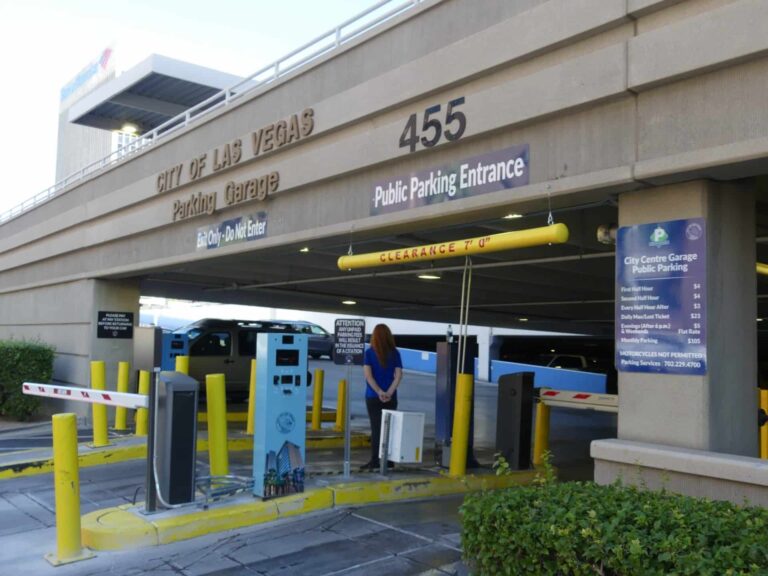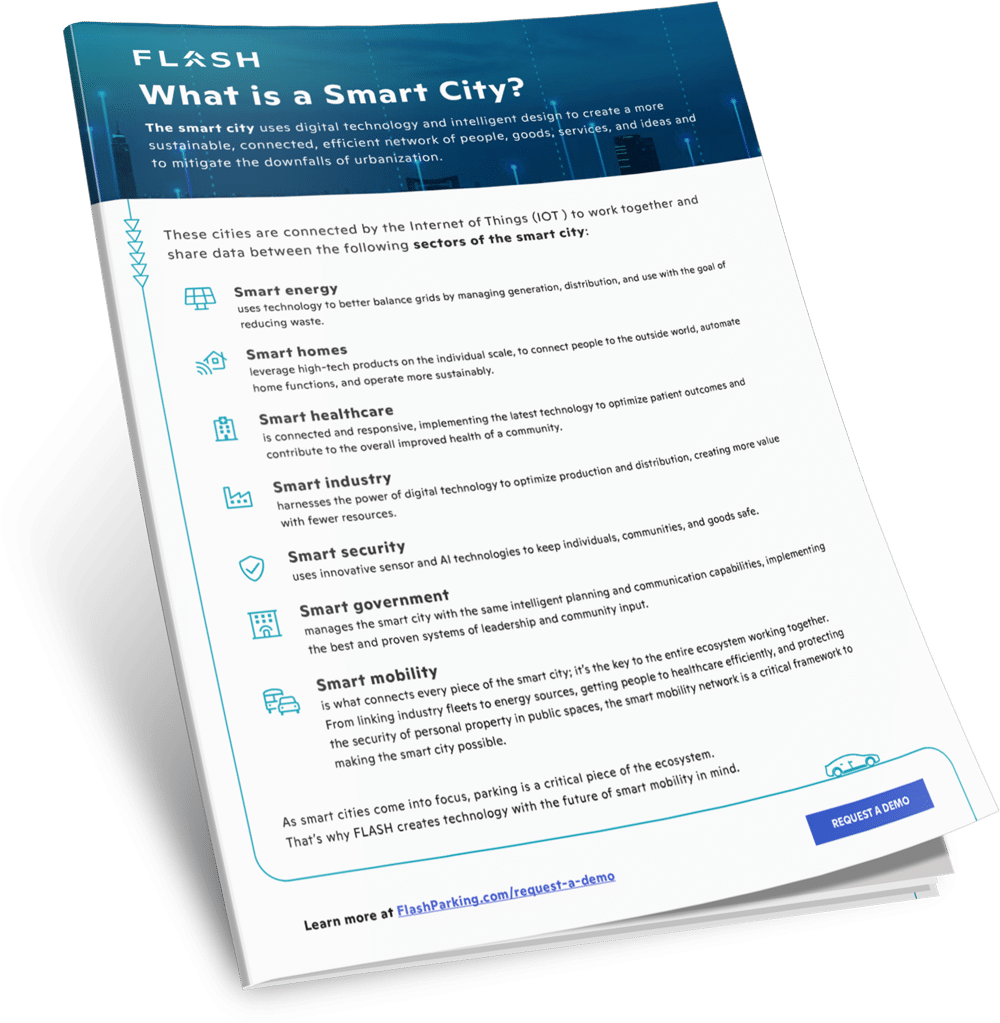

Venue: 5 Municipal Garages, 8 Surface Lots
Parking Operator: City of Las Vegas and LAZ Parking
Operating Parking System Configuration: Parking Access & Revenue Control, event parking, monthly parker access, touchless access via BLE Bluetooth technology, validations, remote mobile app management: Partner Ecosystem Integrations: rideshare staging with Uber, PARIS, eParking Reservations, 2-way video support with Parker Technology.

Staying at the forefront of exciting, new technologies is a key focus for the city of Las Vegas. That’s why they began searching for a technology partner that could grow with the city during its smart transformation. Flash was up to the challenge with its Mobility Hub Operating System: a cloud-born platform configurable to deliver a broad range of site-specific solutions.

Las Vegas needed a future-ready partner who could innovate alongside the Smart City and help it avoid traditional obsolescence issues like limited parking spaces and outdated parking management solutions.
Flash immediately began bringing the vision for smart parking to life by deploying 21st Century automated Parking systems technology in parking garages across the city. Nearly overnight these facilities could offer electronic validations, Bluetooth touchless access. Not to mention widespread integrations — from eParking reservations to two-way video support — available through the Flash platform.
Flash was able to repeatedly integrate previously disconnected, disjointed parking systems to streamline processes and enhance the end-to-end parking experiences for guests.
As we started to dig a little bit deeper, we started to see a lot of (Flash) solutions that gave us the flexibility we didn’t have before.
Maria Tamayo-Soto - CAPP, Parking Services Manager, City of Las Vegas
With close to 23 million visitors a year and limited parking space, the city of Las Vegas was looking for a way to ease curbside congestion and ensure safe and convenient transportation availability. To solve the issue, innovation within the city’s existing transportation ecosystem was critical.
Leveraging the platform’s open-API architecture, the city worked with popular rideshare company and Flash to create a rideshare staging area at two city-owned parking garages. The rideshare integration with Flash’s system allowed drivers to easily access the garages via Bluetooth or a digital barcode in the Flash mobile app to wait for a ride, use a bathroom, or grab a meal from a food truck off of the city’s busy streets.
The city also utilized Flash’s integration with Parker Technology, a two-way video intercom system, to support the driver experience by providing highly personalized service at the gates.
Flash was exactly what we were looking for…and then some. They had capabilities we hadn’t even thought about that we have since been able to enhance the customer experience and make management easier.
Maria Tamayo-Soto - CAPP, Parking Services Manager, City of Las Vegas
With nearly 500 events a year that require the services of garages and parking lots, having a reliable parking system in place to ensure a simple, seamless customer experience was key.
Mobile-first, Bluetooth-enabled hardware provides easy entry and exit, while over-the-air updates allow the parking assets to be updated and configured remotely, like resolving an issue with a pay station.
As a result, these garages are self-maintained, PCI compliant, and deliver a touchless experience, allowing the city to be more flexible with asset use without losing control of the revenue stream.

For every seemingly unsolvable issue, Flash was able to configure the platform to offer technology-forward solutions that added to the seamless parking experience the city was cultivating, ultimately evolving the city’s parking assets into true mobility hubs.

Headquarters
2500 Bee Cave Rd, Bldg 3
STE 400
Austin, TX 78746